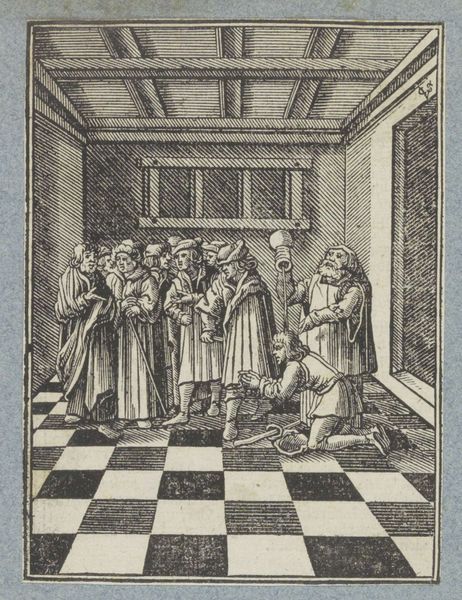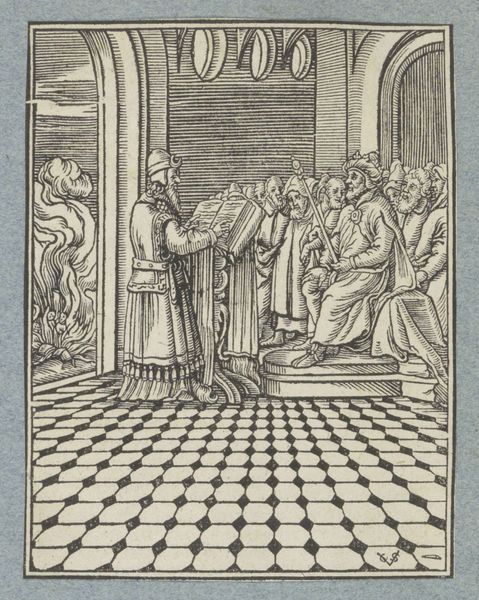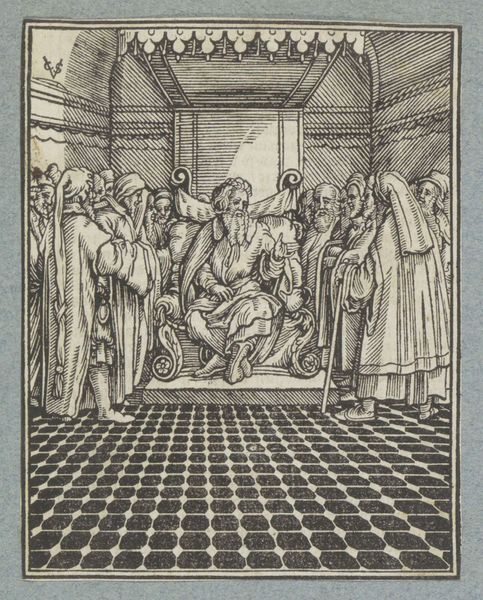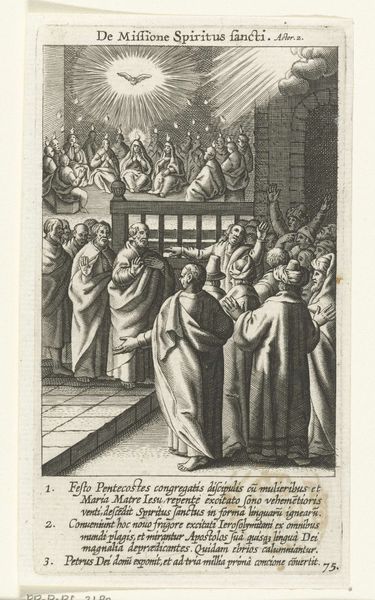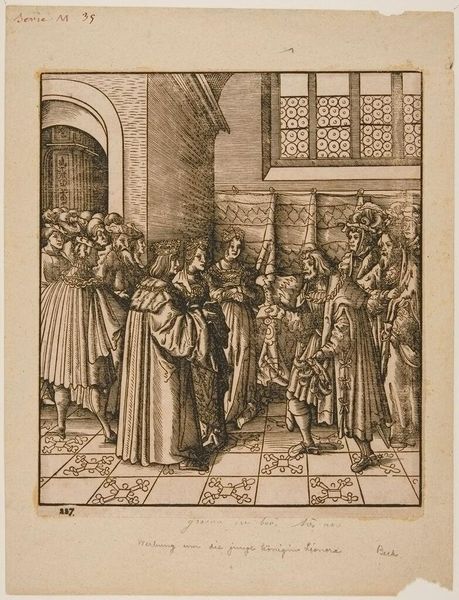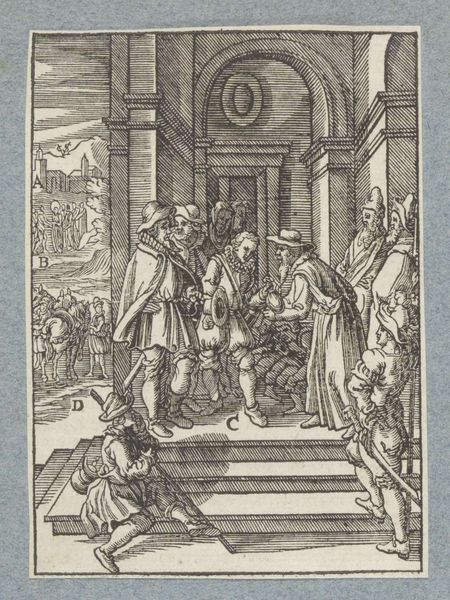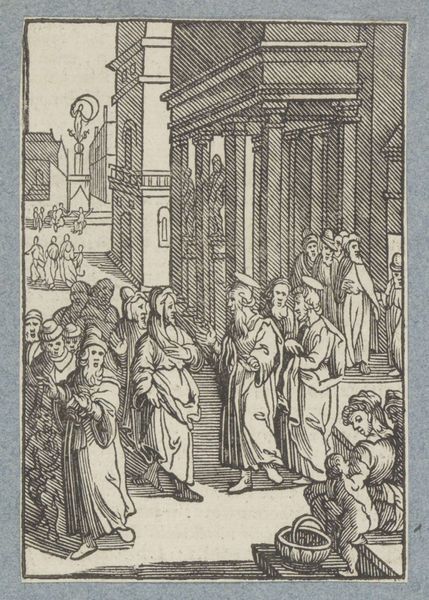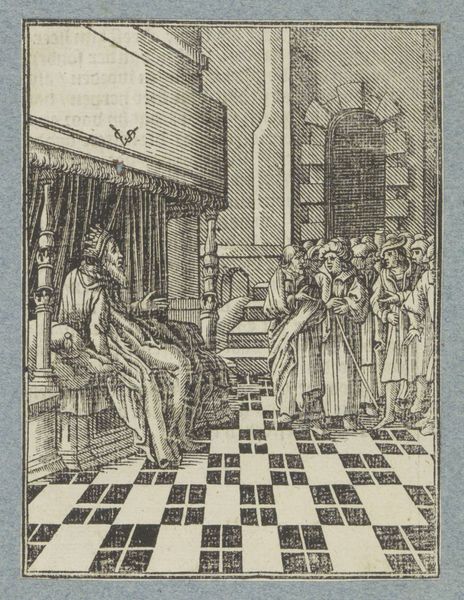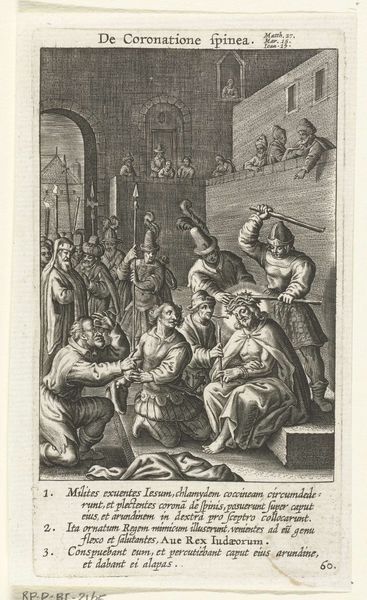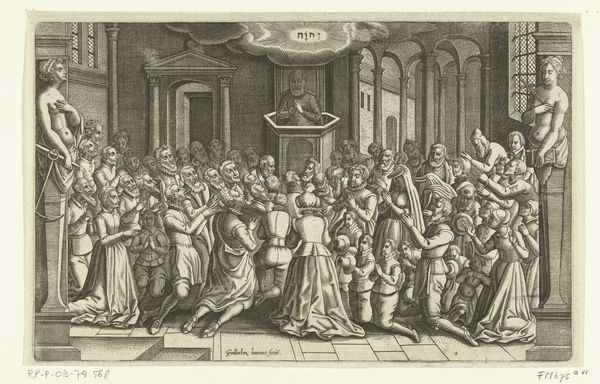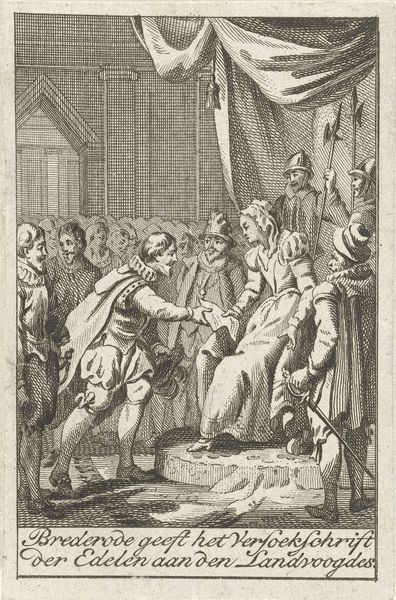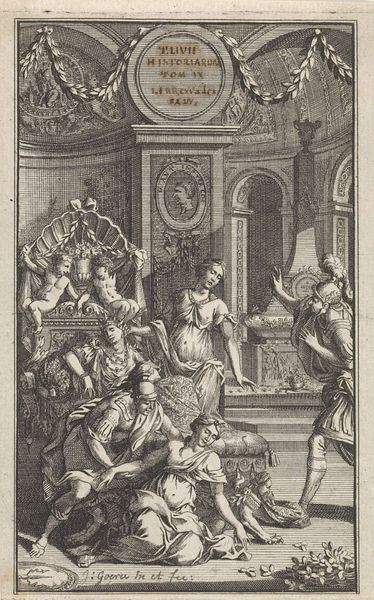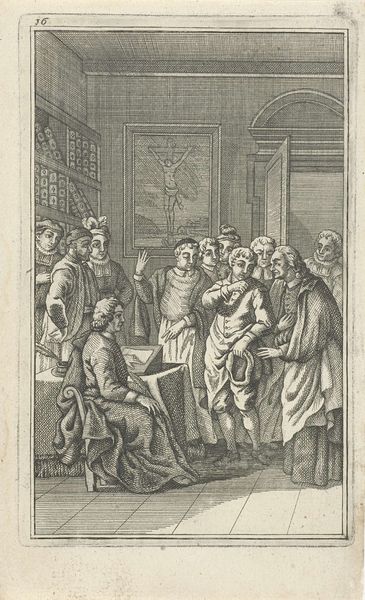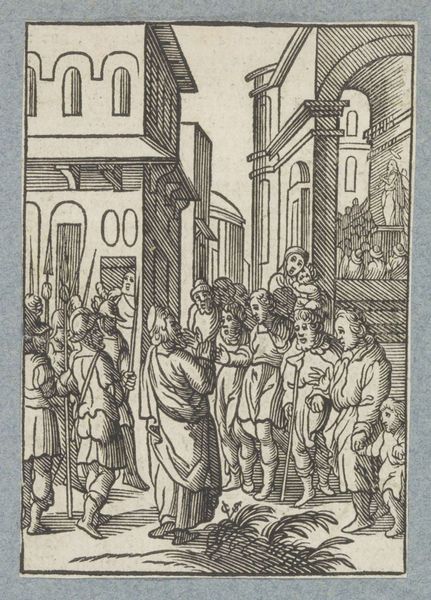
print, intaglio, engraving
#
narrative-art
#
baroque
# print
#
intaglio
#
old engraving style
#
pen-ink sketch
#
thin linework
#
line
#
pen work
#
history-painting
#
engraving
#
intricate and detailed
Dimensions: height 109 mm, width 82 mm
Copyright: Rijks Museum: Open Domain
Curator: The graphic precision immediately strikes me. This print, titled "Jeremiah and the Yoke of Babylon," was created by Christoffel van Sichem II around 1645-1646. It's currently held here at the Rijksmuseum. The lines are so clean and detailed. Editor: Yes, there's an undeniable weight to it, visually. The contrasting black and white give a sense of drama, almost foreboding, but who exactly are we seeing depicted? Curator: Here we witness the prophet Jeremiah, a central figure in the Hebrew Bible, bearing a yoke on his shoulders as a symbolic act of submission to Babylonian rule. The king of Judah and his court stand nearby. Editor: It is compelling how art intersects with socio-political events. To wear that yoke in front of his court – the power dynamics! Sichem’s art certainly makes the power of imagery incredibly apparent. How was this image received at the time, and what meaning did this narrative have in 17th century Netherlands? Curator: That's a fantastic question. Contextually, prints like these served various purposes, ranging from simple illustration to theological statements, often interwoven with commentary on contemporary politics and social morality. Its reception probably hinged on a range of factors like class and the public’s relationship to the Bible. Editor: Right. The artist isn’t just creating; they’re responding to and shaping public perception. The rendering is striking, this Baroque style really heightens the emotional intensity and the narrative's implications, doesn't it? The rigid structure of the tile floors creates an uncanny backdrop, especially the forced perspective that creates the scene of a never-ending prison. Curator: Absolutely. That is definitely highlighted by his commitment to line work. Every element is carefully delineated. Editor: This piece has undoubtedly given me new appreciation for prints as socio-historical records, not just as aesthetically interesting items. Curator: And I appreciate your ability to frame it within the larger questions of power, representation, and identity. That is why an intersectional reading of historical objects and their reception through time is of paramount importance for a contemporary experience.
Comments
No comments
Be the first to comment and join the conversation on the ultimate creative platform.
